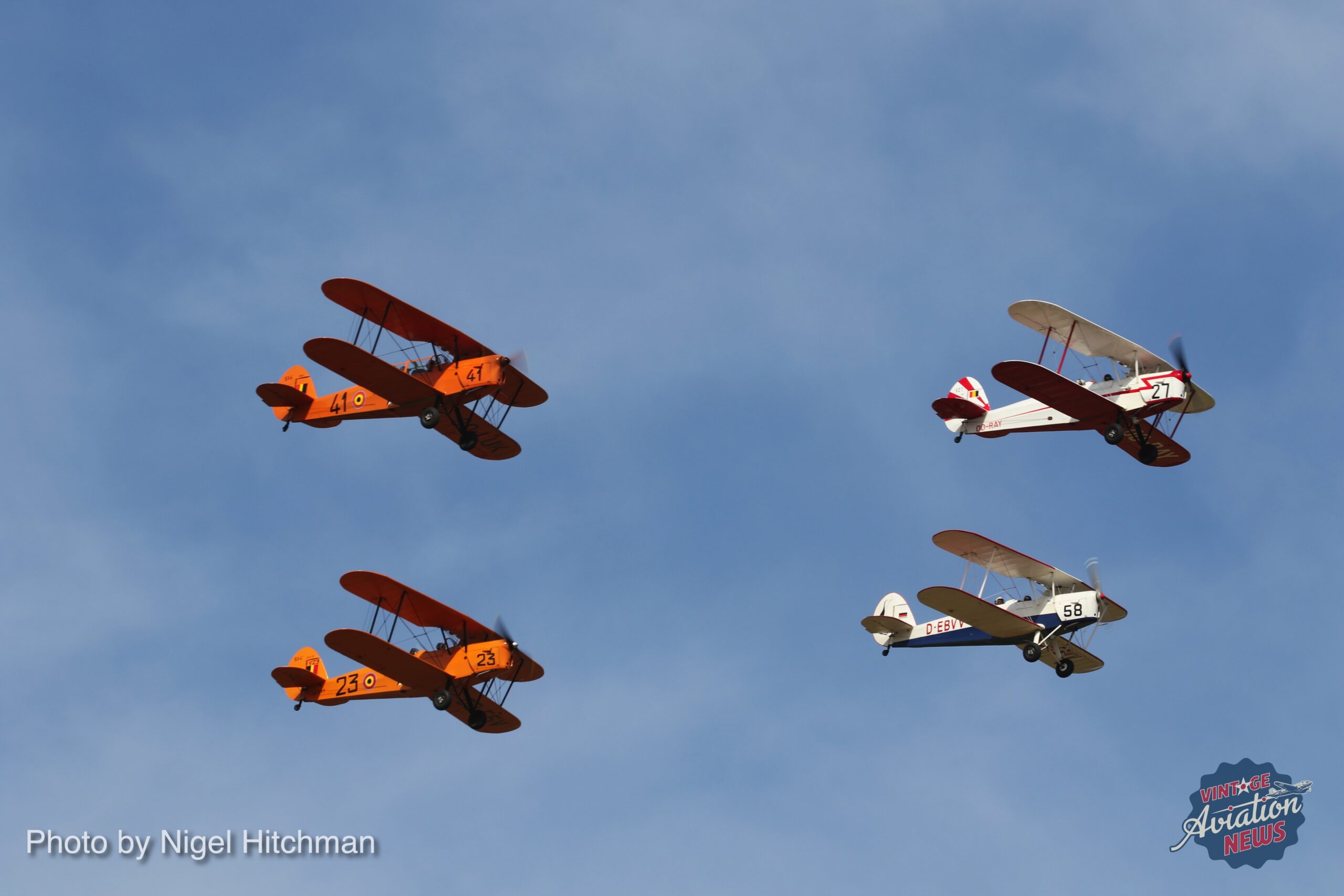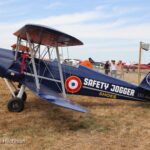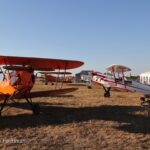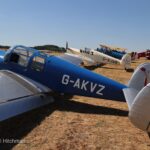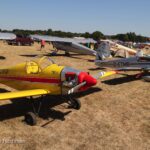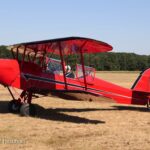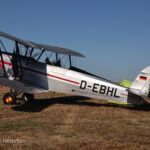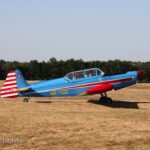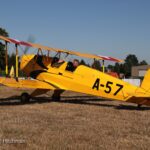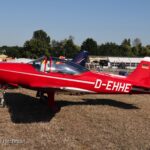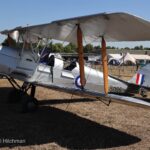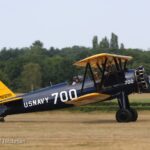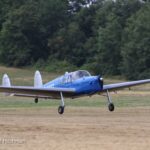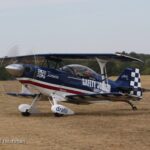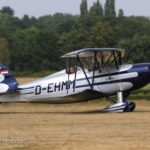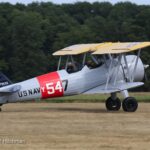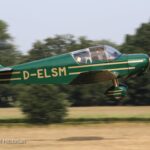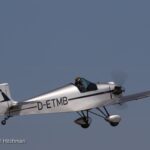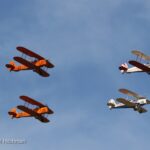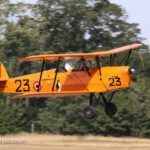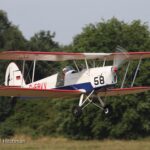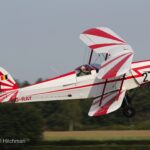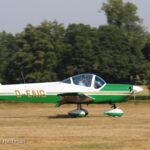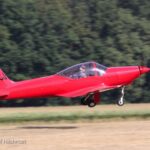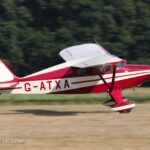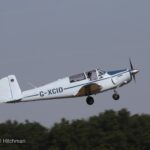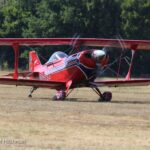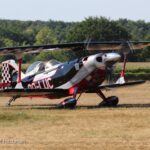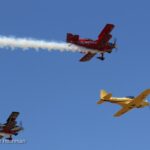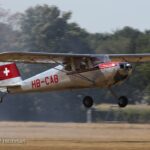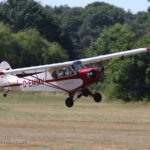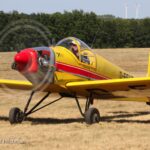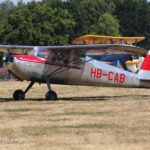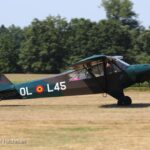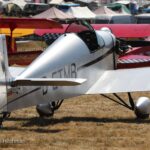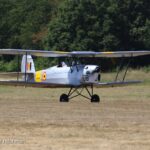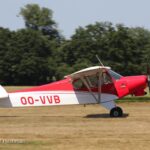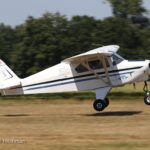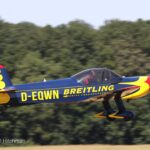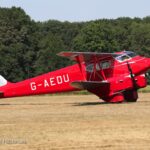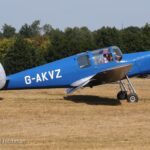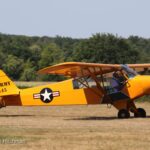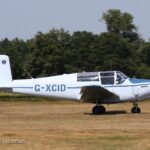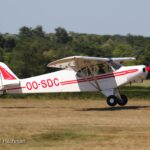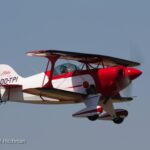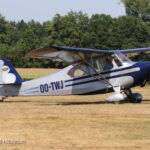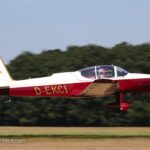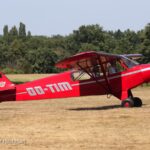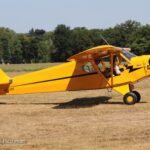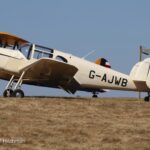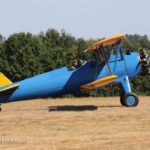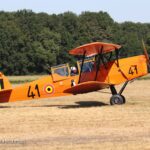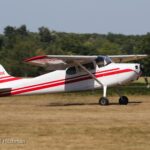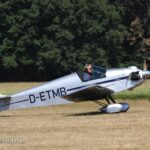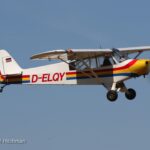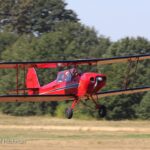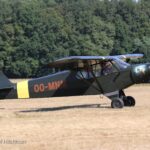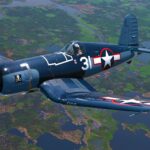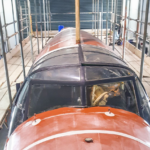By Nigel Hitchman
About forty miles east of Brussels in Belgium, Schaffen-Diest airfield serves primarily as a military parachute training facility on week days however, at the weekend, the Diest Aeroclub holds the reigns, flying their gliders from the undulating, all grass airfield with its roughly 2,000′ runway. The Diest Aeroclub has organized a fly-in here nearly every year since 1979, with Guy Valvekens guiding the many volunteers who make the event possible on most occasions. Valvekens still comes to greet many of the pilots as they arrive; indeed his enthusiasm and hard work have been instrumental in creating the success this event has long enjoyed.
The first fly-in’s featured just a few aircraft, but it didn’t take long for the event to blossom into a far bigger affair. By the mid 1990s, indeed more than 400 aircraft would take part making it probably the biggest European vintage fly-in at the time. While fewer aircraft take part these days, vintage vehicle attendance has grown substantially. It is still a great event though, with more than 200 aircraft, mostly vintage types, joining in the fun in a typical year. However, this summer brought a vicious heat wave to northern Europe unfortunately, which hampered attendance to some degree. Even so, aircraft still came from relatively far afield, with visitors arriving from Holland, Germany, Switzerland, England, Ireland and France, adding to those from the host nation.
The highlight for many was the first appearance of de Havilland DH.90 Dragonfly G-AEDU, now under the ownership of Shipping and Airlines Ltd. at Biggin Hill in England. They also brought their Miles M38 Messenger 4B (GAKVZ) which joined Peter Bishop’s Messenger 2A, G-AJWB. The Belgian designed Stampe biplane always features heavily at Schaffen-Diest, with roughly ten examples coming this year, plus three or four of the new aluminium tube ultralight replicas powered by rotax 912 engines; they are full sized and bear a reasonably convincing likeness to the originals, although I doubt their handling is as nice. There are many Piper Cubs based in Europe, be they left over WWII L-4s (which were used by many aeroclubs from the 50s through the 70s), J3s imported for training/pleasure flying, or surviving examples of the many L-18 and L-21 Super Cubs which served in many European military arms during the 50s – so, obviously, many of these turned up at the fly-in too. There is also always a meeting of aeroplane types emanating from the Italian aeronautical engineer, Stelio Frati, although this year only saw three Falcos come, one from Ireland and the German and Norwegian registered examples (both being recent imports to Belgium). That being said, one civilian-owned SF260 came from the UK, while some Belgian Air Force examples put on a short flying display.
Some of the other unusual visiting vintage aircraft included two German-built Stark Turbulents (D-ETMB being a recent restoration). Designed in France by Roger Druine, Stark built these examples under license during the 1950s. Rollasons also produced the type under license in England, while plans are also available for homebuilders to create their own.
The IAR 823 is a four-seat monoplane which the Romanian designer manufactured during the 1970s and early 80s. The Romanian Air Force used several dozen in training and liaison roles, while the Angolan Air Force operated a dozen examples in the training role too. After the type’s military retirement, most of the survivors were sold to buyers in the United States, so it is now rare to see one flying in Europe. While the IAR 823 which attended this year’s fly-in is registered in France, it is currently based in Belgium.
D-EFOH is a Klemm 107C, a two-seat design which first flew in 1940 although only a few were produced before production halted. The type went back into production during the 1950s with different engines and updated with first a three seat and then a four seat configuration; Bölkow lated acquired the design, producing it as the Bölkow 207.
A Swedish-built SAAB 91D Safir (G-XCID) also took part in the fly-in. The Safir’s designer, Anders J. Andersson, had worked for the German manufacturer, Bücker, earlier in his career, so its not too surprising that the type bears a strong resemblance to the WWII-era Bücker Bü 181 Bestmann. Early production Safirs (dating from 1946) were built as three-seaters powered by a DH Gipsy Major 10, however the next model, the 91B featured a Lycoming O-435 engine. The type’s final development, the 91D, was four-seater driven by a 180hp Lycoming O-360.
Many thanks indeed to Nigel Hitchman for this article and the included images – it really is great to see some of the different kinds of aviation events which take place in Europe.







